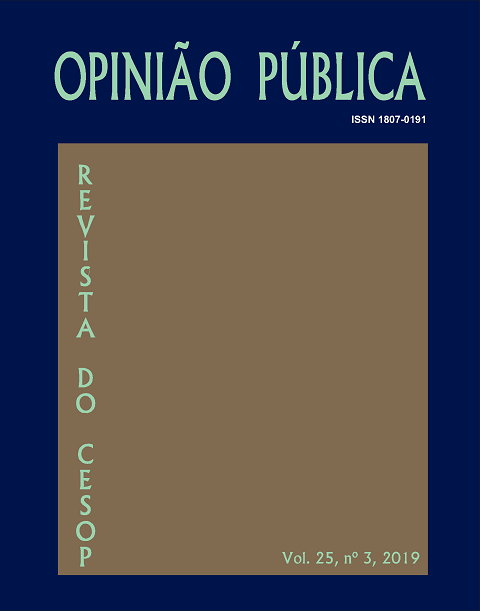Abstract
This article intends to identify the dialogue, as well as its nature and contribution to the clarification of the electoral proposals, of the three main candidates competing in the 2014 presidential elections: Dilma Rousseff (PT), Aécio Neves (PSDB), and Marina Silva (PSB). The primary source of information was the Free Time of Electoral Advertising (block and spots) aired during the two rounds of the elections. The first objective was to elaborate a quantitative analysis of the occurrence of direct dialogue between the candidacies, identifying the candidates who had the most dialogue. The second objective was to qualify the nature of the dialogue undertaken by each candidacy, classifying it based on three categories: deconstruction of personal image; deconstruction of political image; criticism of the opponent’s political project. Such classification will assess to what extent the dialogue between the candidates has allowed discerning with greater or lesser clarity the ideological-political contours between the governmental projects in dispute. It is concluded that the occurrence of dialogue between the candidates in 2014 was increased by the sudden rise in competitiveness of the campaign.
References
BRUGNAGO, F.; CHAIA, V. “A nova polarização política nas eleições de 2014: radicalização ideológica da direita no mundo contemporâneo do Facebook”. Aurora: Revista de Arte, Mídia e Política. São Paulo, vol. 7, nº 21, p. 99-129, out. 2014–jan. 2015.
BUDGE, I.; FARLIE, D. J. Explaining and predicting elections: issue effects and party strategies in twenty-three democracies. London: Allen & Unwin, 1983.
DOWNS, A. An economic theory of democracy. New York: Harper and Row, 1957.
KAPLAN, N.; PARK, D. K.; RIDOUT, T. N. “Dialogue in American political campaigns? An examination of issue convergence in candidate television advertising”. American Journal of Political Science, vol. 50, nº 3, 2006.
MCCOMBS, M.; SHAW, D. “The agenda-setting function of mass media”. Public Opinion Quarterly, New York, vol. 36, nº 2, p. 176-187, 1972.
PAGE, B. Choices and echoes in presidential elections. Chicago: University of Chicago Press, 1978.
PETROCIK, J. R. “Issue ownership in presidential elections, with a 1980 case study”. American Journal of Political Science, vol. 40, nº 3, p. 825-850, 1996.
PETROCIK, J. R.; BENOIT, W. L.; HANSEN, G. J. “Issue ownership and presidential campaigning, 19522000”. Political Science Quarterly, vol. 118, nº 4, p. 599-626, 2003.
SIGELMAN, L.; BUELL JR., E. H. “Avoidance or engagement? Issue convergence in U.S. presidential campaigns (1960-2000)”. American Journal of Political Science, vol. 48, nº 4, p. 650-661, 2004.
SIMON, A. F. The winning message: candidate behavior, campaign discourse, and democracy. New York: Cambridge University Press, 2002.
STOKES, D. E. “Spatial models of party competition”. American Political Science Review, vol. 57, p. 368-377, 1963.
WALGRAVE, S.; LEFEVERE, J.; NUYTEMANS, M. “Issue ownership stability and change: how political parties claim and maintain issues through media appearances”. Political Communication, vol. 26, nº 2, p. 153-172, 2009.
WEBER, M. H. Imagem pública. In: RUBIM, A. A. C. (org.). Comunicação e política: conceitos e abordagens. Salvador: EDUFBA/Unesp, 2004.
XENOS, M. A.; FOOT, K. A. “Politics as usual, or politics as unusual? Position taking and dialogue on campaign websites in the 2002 U.S. elections”. Journal of Communication, vol. 55, nº 1, p. 169-185, 2005.
A Opinião Pública utiliza a licença do Creative Commons (CC), preservando assim, a integridade dos artigos em ambiente de acesso aberto.

